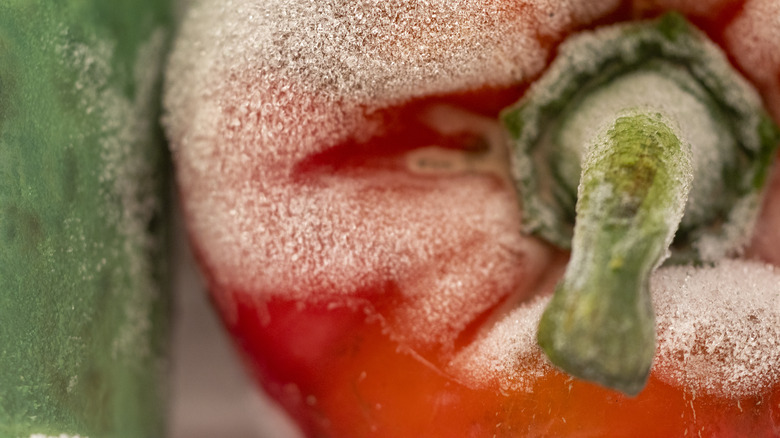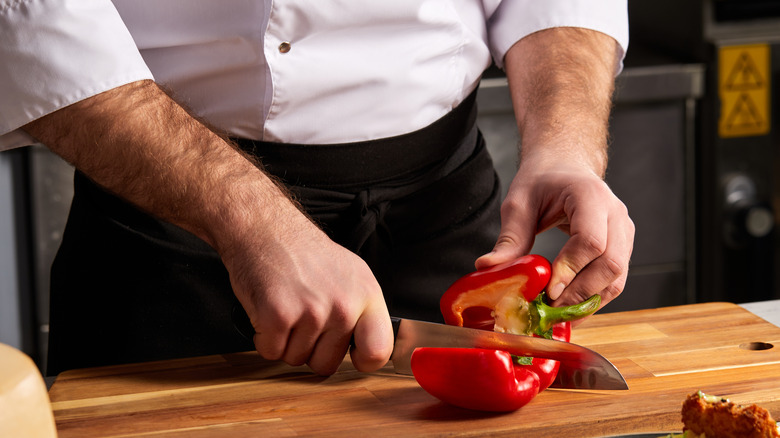Is It Dangerous To Eat Moldy Bell Peppers?
When you spot moldy cheese in the fridge drawer, chances are, you throw it out. You'd do the same with soured milk, cottage cheese, and other items with a date clearly stamped on the food packaging, right? What about fresh vegetables, though? They don't get the special treatment of possessing a "best by" sticker. So, it's up to you to know when to keep them and toss them.
A fuzzy piece of food, in some cases, is a clear indicator that the fare has lived its life expectancy. Most foods should be thrown away when they become moldy, while others are okay to consume. The USDA put together a list of information that tells us which foods are safe to handle with mold and which aren't. Believe it or not, some foods are safe to eat even after they begin growing mold.
Bell peppers and mold
Obviously, yogurt, sour cream, and some soft cheeses should be tossed when they begin sporting a fuzzy coat or a soured smell. Bread, jelly, nuts, peanut butter, cooked pasta, and casseroles are also on the "do not eat" list for mold.
The USDA says something different for some veggies, though. They tell us that bell peppers are edible even after the fuzz appears. The USDA recommends cutting at least an inch around the moldy spot to remove it from the pepper. As a precaution, keep the knife away from the mold itself in order not to contaminate the remaining part of the vegetable. Mold has a difficult time penetrating dense foods, and that makes it easier to remove those moldy areas. Small mold areas can be safely cut away from firm fruits and veggies with low moisture content. Simply remove the area and enjoy!
Consuming food that contains mold can cause allergic reactions and respiratory problems. According to Greatist, some molds contain mycotoxins, which can cause more severe symptoms of mold consumption.
HuffPost tells us that if you aren't sure whether the food is safe to eat, toss it. Remember the USDA's recommendations for removing mold spots from food, and then chow down with impunity.

